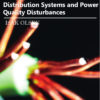Biomass is fuel that is developed from organic materials, a renewable and sustainable source of energy used to create electricity or other forms of power. Biomass is a renewable energy source not only because the energy in it comes from the sun, but also because biomass can re-grow over a relatively short period of time compared with the hundreds of millions of years that it took for fossil fuels to form. Through the process of photosynthesis, chlorophyll in plants captures the sun’s energy by converting carbon dioxide from the air and water from the ground into carbohydrates—complex compounds composed of carbon, hydrogen, and oxygen. When these carbohydrates are burned, they turn back into carbon dioxide and water and release the energy they captured from the sun. Biomass can be converted to other usable forms of energy like methane gas or transportation fuels like ethanol and biodiesel. Rotting garbage, and agricultural and human waste, all release methane gas, also called landfill gas or biogas. Crops such as corn and sugarcane can be fermented to produce the transportation fuel ethanol. Biodiesel, another transportation fuel, can be produced from leftover food products like vegetable oils and animal fats. Also, biomass-to-liquids and cellulosic ethanol are still under research. Generally, the term biomass is used for all materials originating from photosynthesis. However, biomass can equally apply to animals. Conservation and management of biomass is very important. There are numerous methods and techniques for biomass evaluation. One of these methods is remote sensing. The book entitled Biomass and Remote Sensing of provides information about biomass, but also about biodiversity and environmental factors estimation over a wide area.













